 Your new post is loading...
 Your new post is loading...
Effie Worldwide named the most effective marketers in the world, based on the global results of the 2017 Effie Effectiveness Index. Unilever, Vodafone, WPP, BBDO Worldwide, Sancho BBDO and ACG Advertising Agency held the top rankings in the categories of Most Effective Marketer, Brand, Agency Holding Group, Agency Network, Agency Office and Independent Agency, respectively. Now in its seventh year, the Effie Index recognizes the companies that create the most effective marketing communications ideas from around the world, determined by their cumulative success in more than 40 national, regional and global Effie Awards competitions. The 2017 Effie Index is compiled from 3,601 finalists and winning entries from worldwide Effie Awards competitions held between January 1, 2016 and December 31, 2016. Global food and beverage companies continue to dominate the most effective marketer ranking. Unilever jumped one spot to regain the title of Most Effective Marketer, globally, in this year’s rankings. It previously held the top spot from 2012-2014. Nestlé moved up two spots as the second most effective marketer, while Procter & Gamble retained its third place ranking....
Marketers are constantly looking to better understand consumers and ultimately deliver an engaging experience. According to Q4 2015 research, many executives are using revenue metrics to quantify the success of customer efforts.
CMO Council looked at how marketing executives in North America quantify customer engagement success. More than a third of respondents said that revenue metrics, like customer lifetime value, revenues per customer and overall revenue increases, were the primary type of metric they used to measure consumer engagement.
Additionally, 30% of respondents said that campaign metrics, such as clicks, conversions, shares, traffic and web analytics, were the primary type of metrics they used. Fewer marketing executives said they relied on sales enablement metrics, service metrics and finance metrics to measure overall customer engagement success....
So when marketers talk about how much they work with numbers now that we’ve entered the sci-fi1 age of Internet data collection, I cringe. Let’s just say I’m glad I’m covering marketing for a living rather than actually doing it.
But just because numbers may be marketers’s new best friend, that doesn’t mean they’re all good. Some, in fact, are a bit terrifying.
And because I’m a sick bastard who wants you all to feel my mathematical pain, I’ve gathered 13 stats that should send chills down any marketer’s spine. Just to be clear, all of these statistics have pros and cons, and some stats may not have an impact on your marketing strategy. But hopefully at least one of them will get you to jump. Enjoy....
Marketers say the lack of a single customer view is their biggest barrier to successful cross-channel marketing, according to a recent report from Experian Marketing Services.
The report was based on data from an online survey of 1,012 marketers conducted between November 10 and December 7, 2014. Responses were collected from marketers from around the world.Some 32% of respondents say the lack of a single customer view is a top challenge to their cross-channel marketing efforts. Other top challenges include technology limitations (31% of respondents cite) and organizational structure (31%)....
Around the executive table, marketing has traditionally had the hardest time proving their value. The correlation between marketing investment and revenue impact has often been fuzzy.
This is particularly true for consumer marketing. When a shopper picks up a particular bottle of shampoo in the grocery aisle, how much of that decision was influenced by marketing? How much of that decision related to years of brand investment, how much to the latest ad, how much to the recent packaging redesign, how much to the placement on shelf, how much to the in-store sales promotion? There are a lot of factors that go into any purchase. How much related to a brand-building message, and how much direct-response? Which tactics should get the credit, and therefore more investment in the future?...
Unfortunately, many landing pages overload visitors with information and options. All of the choices end up confusing visitors, which results in fewer customers.
How Not to Confuse Your Landing Page Visitors: 1. Help Visitors Take the First Step The first rule about not confusing people with too many options is…give them fewer options. Though challenging to some, it is crucial to minimize the number of actions you ask visitors to take on your landing page. The purpose of a landing page is to allow people to start the process and get their foot in the door. It’s where the visitor begins the journey with you, so the fewer choices a visitor has to make on your landing page, the better....
For society, smartphones are becoming appendages. They may even be as important as breathing air! Ok, not really, but with Cyber Monday now a date on the holiday calendar, it is evident that our smartphones will influence how society shops.
A higher percentage of women than men shop online. Additionally, 30% of women use mobile devices to shop.
Throw in social media into this mobile online shopping melting pot and what do we get?
Let’s find out!
The desire to be part of something bigger. To really understand what it is about branding that appeals to people, we first have to understand the deeply entrenched set rules that we as people, animals, or however you would like to refer to yourself, actually work to, whilst observing the guidelines, parameters and systems that we work within…sure Brands act as a sign post for the product or service, building associations etc but that’s not all and not enough either.
To avoid going into the deep physiological motivations that affect all of us, for the purposes of this article I am forced to make some sweeping generalisations. The first of these is that beyond all other emotional requirements, we have an unending drive to be understood. Understanding is the lifeblood of our emotional state. For those of you that wish to do a little back reading about this somewhat broad statement, I can suggest several well written studies, that do a far better job of explaining why this is than I can deliver in this short thought piece.
To illustrate: have you ever noticed that most people actually quite like talking about their thoughts, feelings, opinions and emotions to other people. We see the evidence of this in the massive popularity of status updates and tweets etc…
Today's consumers are using many channels to consume information. Are retailers thinking about an omnichannel strategy? If not, they should!
It’s well established that today’s consumers use multiple channels – mobile, Web, social media, in-store – when engaging with retailers. On any given day, a shopper might research a clothing item online, visit the brand’s Facebook page and then purchase it in a store where she can try it on; the next, she might see something in a store on her lunch hour, price-check it on her smartphone and purchase it online at home, after checking in with the retailer’s social media pages.
According to the Interactive Advertising Bureau, three-quarters of shoppers use their smartphones while in-store to make a purchase decision, and according to Vantiv VNTV 0%, Inc., half have research and purchased an item online and then picked it up in the store. But how aware are consumers of all this channel-switching? Do they think, “Wow, I’ve really used a lot of channels today!” Or even, “Hmmmmm – which channels should I use to engage with my favorite retailer?”
I’m thinking probably not. They’re just doing what consumers do, flitting from channel to channel like a butterfly, as fickle as can be, calling to mind the flighty “followers of fashion” described in The Kinks’ 1966 single. What is an Omnichannel Strategy? With consumers freely using whichever channel suits them at the moment, retailers must attract, engage with and gain the loyalty of these followers of fashion, and they can do this by creating a consistent experience among all channels — the so-called omnichannel experience.
An omnichannel strategy begins with generating awareness on digital channels, because while brand awareness in the past was all about signage and window dressing on High Street, it’s perhaps more important today to stand out on digital channels. Indeed, in emerging markets, mobile devices are the first channel through which consumers may experience your brand....
By identifying the differences between “innovators” and “laggards” and everything in between, Geoffrey Moore creates a roadmap for how new markets develop. While his book focuses on high tech, the lessons that he draws and the example he gives are applicable to every industry and business situation....
Why are techies and scientists so excited about big data? It allows us to identify patterns and predict things like never before.
...Businesses are using social media, but consumers don’t seem to be taking much notice, a new study by customer experience strategy, design and research company Fifth Quadrant has found, with businesses blamed for not being where the customer is. The report titled ‘Emerging Consumer Channels: Social Media, Web Chat and Smartphone Apps’ has found that more than two-thirds of businesses were using some form of social media to communicate with customers, but only one third of those customers using the channel returned over the past three months. The issue seems to lie in which sites are popular with consumers versus which sites businesses are predominantly using, suggests the report....
LinkedIn is the most popular social media tool among the nation's fastest-growing private companies, according to a study by the University of Massachusetts at Dartmouth, Center for Marketing Research, under the direction of researcher Nora Ganim Barnes, PhD. More than 8 in 10 companies listed on the 2012 Inc. 500 (81% of them) use the professional networking site, up from 73% a year earlier. Meanwhile, the proportion of Inc. 500 companies using Facebook has declined, from 74% in 2011, to 67% in 2012....
|
This past year, we've seen the importance of visual content emphasized by the changes that occurred across almost every major social network, including Facebook, Twitter, Instagram, and Pinterest. At the same time, both video and infographics have become powerful tools for brands looking to communicate more easily with their readers.
To help you keep pace with these trends, let's take a look at some statistics that demonstrate the impact visual content has on reach, engagement, and sales....
Today more than ever, food has become one of the most important—and discussed—choices among U.S. consumers. Since food purchases are heavily influenced by trust, Boston-based consultancy C Space released a study exploring customers' perceptions. "In today's marketplace, consumers are more actively engaged than ever in choosing what foods to buy and what brands to buy them from," said Alan Moskowitz, director at C Space.
"Given the speed that information travels, brand trust can increase or erode very quickly in consumers' minds. For brands, staying close to their customers can help them stay in touch with evolving attitudes and help them collaborate with consumers on new products, packaging and marketing that earns or maintains trust."...
Survey offers empirical evidence that, despite perceived popularity of discount-based promotions, reward-based promotions actually result in higher purchase intention (short-term) as well as greater brand equity (long-term).
Palo Alto, September 1st– Ifeelgoods, the leading platform for setting up turn-key reward promotions and campaigns, announced today the results of a new study that measures the impact of reward-based promotions against traditional discount-based promotions with regard to brand equity and purchase intention.
With over 1,000 consumers surveyed worldwide, one of the study’s most compelling findings was the fact that reward-based promotions outperform discount-based promotions in both brand equity and purchase intention. The study shows that reward-based promotions are even more efficient compared to discount-based promotions from brands whose consumer base is mostly composed of frequent shoppers and/or utilitarian shoppers....
What used to be our predictable, daily sessions online have been replaced by many fragmented interactions that now occur instantaneously. There are hundreds of these moments every day—checking the time, texting a spouse, chatting with friends on social media.
But then there are the other moments—the I want-to-know moments, I want-to-go moments, I want-to-do moments, and I want-to-buy moments—that really matter. We call these "micro-moments," and they're game changers for both consumers and brands.
Micro-moments occur when people reflexively turn to a device—increasingly a smartphone—to act on a need to learn something, do something, discover something, watch something, or buy something. They are intent-rich moments when decisions are made and preferences shaped. In these moments, consumers' expectations are higher than ever. The powerful computers we carry in our pockets have trained us to expect brands to immediately deliver exactly what we are looking for when we are looking. We want things right, and we want things right away....
The reality is that there are so many messages being thrown at consumers every second of every day that individual voices have a tough time cutting through the noise.That, coupled with the fact there are now 4 million Google searches a minute, marketers really need to be in the right place at the right time.Luckily, countless studies have revealed interesting insights into consumer behavior that are invaluable in the race to gain market share.We’ll talk about 10 of them....
HBR: What kind of customer preferences did you focus on?
In one experiment we asked managers to develop a new car model and choose the features customers wanted. In another we had them decide on a new ad campaign for Rolex. In a third they were asked to set the price for a sandwich at a café. In every case, predictions about what customers wanted matched the managers’ personal preferences more closely when the managers had been primed to be more empathetic.
They were projecting?
Yes, even when the customers were totally different from themselves. In the sandwich experiment, for instance, the customers were students. Completely different people, but the managers still projected their own preferences onto them....
Experian Marketing Services released its 2014 Digital Marketer Report, with the theme of “becoming a cross-channel marketing mastermind.” The report, available for download here, is an extensive analysis of the landscape as it currently sits for digital marketers in 2014.
This is the sixth iteration of the report, which runs over 100 pages and is chock-full of digital imperatives. For travel brand marketers working towards planning their next fiscal year budgets in the coming months, this report also reveals some key areas of shifting focus. Here are some of the benchmarks and trends being tracked in the report – this is only a taste, as the report is truly extensive in benchmarking scope....
Super-rich watch buyers are not all equal. Recognizing that ultra-high-net-worth consumers are not a homogenous group based on psychographics, there are three profiles marketers can use to craft appropriate messages for the watches they are selling.
“If you assume the market of ultra-high-net-worth households is at about 200,000 worldwide,” said Douglas Gollan, Editor-in-Chief of Elite Traveler, a magazine that targets the wealthy through distribution aboard private jets and also publishes an annual watch guide for readers, “using the research we’ve done examining psychographic composition of wealthy watch buyers, there are 21,000 Connoisseur households accounting for US$4.7 billion in sales, 31,000 Trendsetter households generating US$2.5 billion in purchases and 13,000 Winner households accounting for US$2.3 billion in luxury timepiece sales.”...
Six minutes: it isn’t a lot of time, but it’s all you’ve got to keep shoppers’ attention, according to a new study conducted in the UK from Omnico, an omnichannel and customer experience company.
According to the findings, British shoppers will patiently wait in line for roughly 5 minutes and 54 seconds in-stores before they abandon their path to purchase completely and leave the store....
“Brandwashed: Tricks Companies Use to Manipulate Our Minds and Persuade Us to Buy” is an attempt to write a modern version of “The Hidden Persuaders”. Martin Lindstrom cannot write as elegantly as Packard, as his chapter titles (eg, “Buy it, get laid”) make clear. But as a marketing veteran who lists McDonald's, Procter & Gamble and Microsoft among his former clients, he knows the industry well. It is far more sophisticated than it was in the 1950s, and just as cynical.
Marketers have vastly more information about potential consumers than ever before. Every time you use a loyalty card you surrender personal information. Every time you do a Google search or hit the “like” button on Facebook, you surrender yet more. Google and Facebook protect personal privacy, but they also make money by selling generic information to advertisers. Professional data-miners use electronic data to create a detailed picture of what you have bought in the past (“history sniffing”) and how you bought it (“behaviour sniffing”). They can then draw your attention to products they think you might want to buy in the future. Smartphones can tell you that there is a shop nearby that stocks just the thing you have been looking for.
Marketers milk science for insights. Studies show that music can affect people's behaviour: shoppers in American department stores who are exposed to piped tunes with a slow tempo spend 18% longer in the store and make 17% more purchases than those who shop in silence. Marketers routinely track shoppers as they make their way around supermarkets and listen in on their conversations at the counter. They also take willing subjects and observe their reactions as they gawp at products....
...Among other things, baby-boomer marketers need to accept the fact that millennials have not inherited their parents' love for the "touch" of paper. They do not naturally go gaga over double-page spreads of either editorial or advertising in magazines. They do not feel compelled to seek their fashion and beauty direction from the magazines that served as bibles for older generations. Nor do millennials feel the need to park themselves in front of a TV at the time appointed for their favorite show, or even to watch TV on a TV at all. Millennials spend a huge amount of their lives online: on smartphones (59%), on tablets (35%) and on their laptops (70%). As of 2011, 91% of millennials are regular internet users, according to Forrester Research....
Coca-cola finds online buzz has no measurable short-term sales impact, but digital display ads work about as well as TV. Study finds online buzz has no measurable impact on short-term sales, but online display ads work about as well as TV, said a company executive in a presentation at the Advertising Research Foundation's Re:think 2013 conference in New York today. It's a stunning admission for a company who's flagship brand has 61.5 million fans, more than any other brand on Facebook. But Eric Schmidt, senior manager-marketing strategy and insights at Coca-Cola, isn't giving up on buzz just yet. And he cautioned against reading too much into the research, noting that it covers only buzz, not sharing, video views or other aspects of social media. But when Coca-Cola put buzz sentiment data into the same analytical framework it uses to evaluate other digital media, Mr. Schmidt said, "We didn't see any statistically significant relationship between our buzz and our short-term sales."...
|



 Your new post is loading...
Your new post is loading...



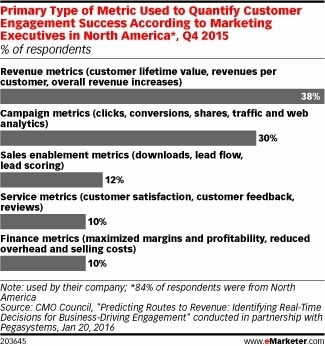



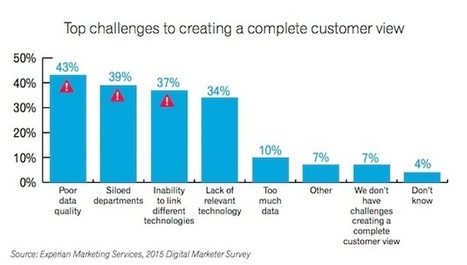



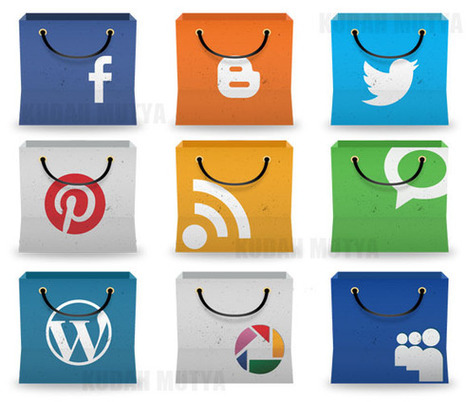







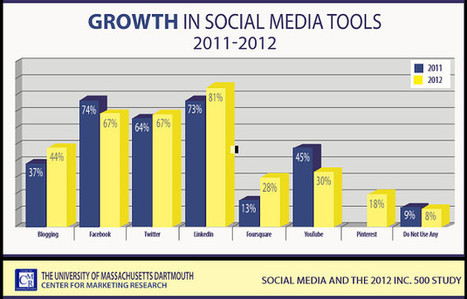
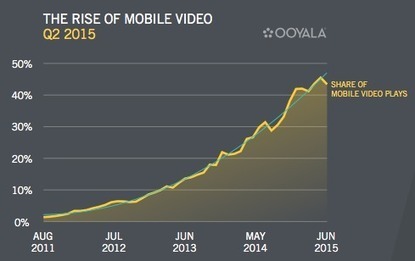
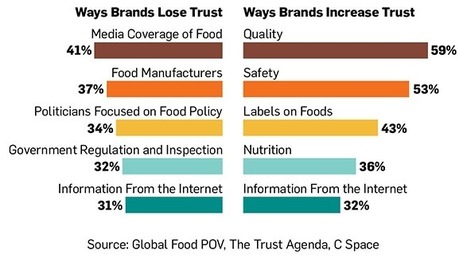



















Fascinating results and trends in global marketing.